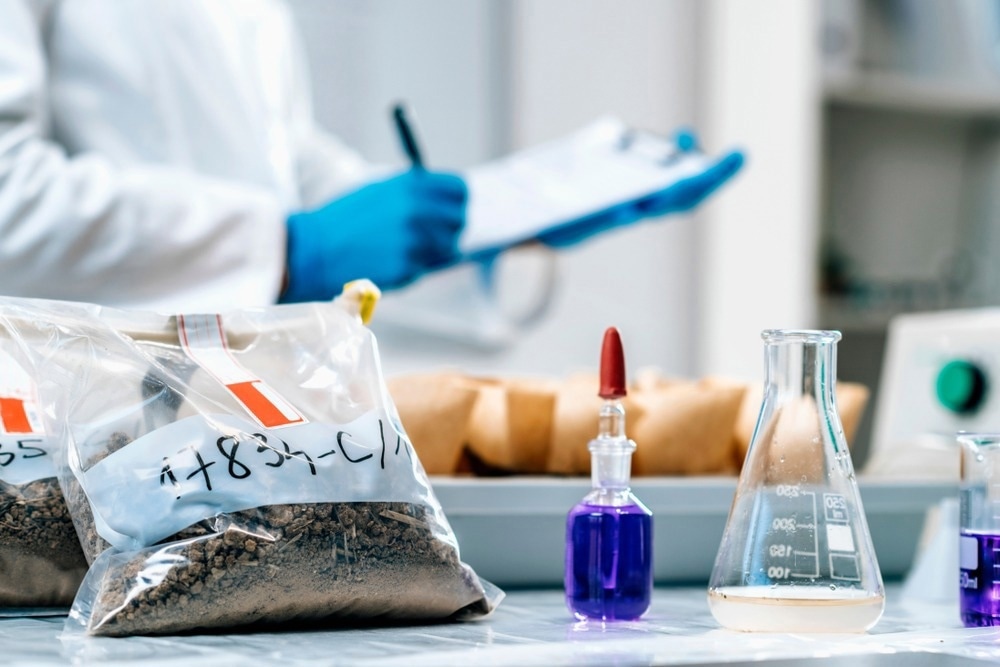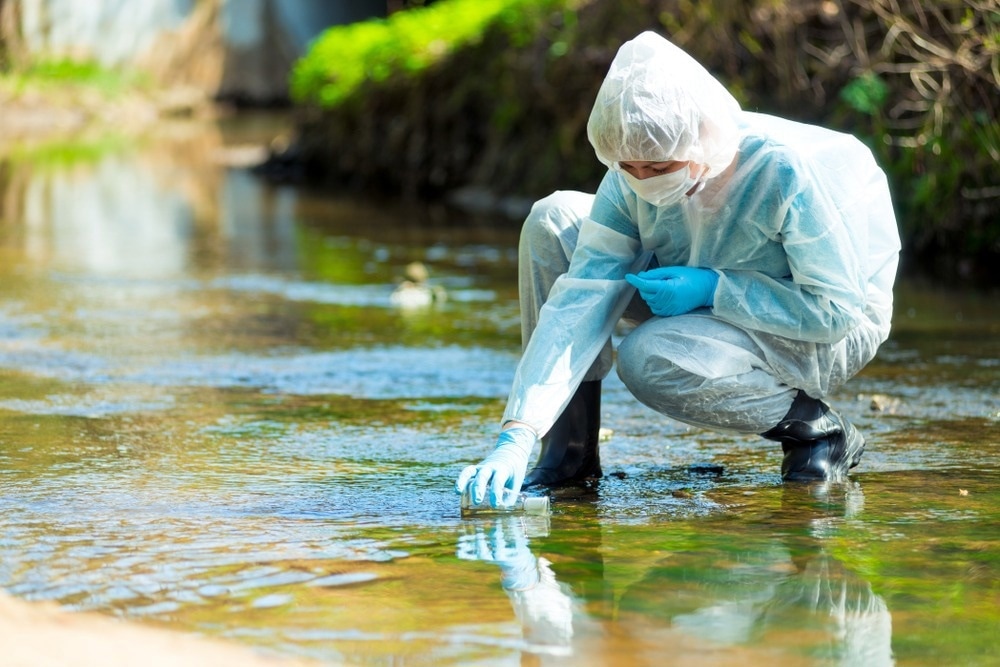In this interview conducted at Pittcon 2023 in Philadelphia, Pennsylvania, we spoke to this year's recipient of the Satinder Ahuja Award for Young Investigations in Separation Science, Emanuela Gionfriddo.
Could you please introduce yourself and your research activities?
My name is Emanuela Gionfriddo, and I am an Assistant Professor of Chemistry at the Department of Chemistry and Biochemistry at the University of Toledo. My research group focuses on developing new micro-separation methods for analyzing environmental contaminants, both in environmental and biological samples.
How did you become involved in this field?
I first became involved in the field of separation chemistry during my undergraduate thesis project at the University of Calabria, Italy. My thesis project was related to the characterization of tomato aroma profile, and we were trying to discriminate the aroma of Italian tomatoes versus international tomatoes in terms of food quality and safety.
I worked with a gas chromatograph hyphenated to a mass spectrometer system, and used solid-phase microextraction for extraction and preconcentration of volatile molecules. That was my very first introduction to this technique.

Image Credit: Microgen/Shutterstock.com
Could you define what a heterogenous system is?
A heterogeneous system is a system in which multiple phases are present at the same time. For example, in dirty water, you might have the water phase plus some suspended solids. This is an example of a heterogeneous system.
What are the major challenges associated with isolating small molecules from these heterogeneous systems, particularly those from biological or environmental samples?
Our group now, among other things, is focusing on the analysis of PFAS. These are a class of contaminants present in environmental samples at part per trillion levels. This level can be compared to taking a drop of water from an Olympic-sized swimming pool. This is what we are doing, basically finding the needle in the haystack.
Emerging Methods in Separation Science for Environmental Samples - Emanuela Gionfriddo at Pittcon 2023
Why is it so important to determine the chemical composition of environmental and biological samples, especially in the context of sustainability?
Everything that we release into the environment from anthropogenic activity, the environments give back to us. More often than not, these chemicals have an unfavorable impact on our health and often lead to various health issues. Thus, it is very important to understand how environmental pollutants migrate in the environment and the route of exposure for humans and wildlife.
How would you define a green methodology in the separation sciences?
The development of green methodologies in the separation sciences is a field that has exploded over the last 10 to 15 years. We are essentially trying to minimize the number of consumables and solvents used for chemical analysis. This is particularly important when conducting an environmental analysis because we do not want to further contaminate the environment beyond what we are already monitoring.
How feasible is a green future using these green methodologies in analytical chemistry? Are there any challenges that need to be addressed first to achieve this future?
The separation chemistry community is aggressively pursuing green separation methodologies for chromatographic separation and analytical extraction because we have experienced a spike in the cost of reagents.
Reducing this is crucial not only from an economic standpoint but also due to the well-known impact of environmental pollution on our planet. Preserving nature is a responsibility we all share, and we strive to do our part.
Are there any new kinds of microextraction technologies that you are monitoring, particularly in the green space?
In my lab, we are exploring solid-phase microextraction through biocompatible extraction phases. The use of these biocompatible extraction phases allows microextraction in complex systems to be performed without having to pretreat the sample.
In addition to reducing the sample pretreatment time, we are also avoiding cross-contamination. Every time you process a sample, there is a contamination risk, and we want to prevent this.
These biocompatible extraction phases are able to be exposed directly to complex samples, such as blood or human plasma, without any further pretreatment of the sample. They efficiently perform the extraction and can be reused time and again.

Image Credit: kosmos111/Shutterstock.com
Why are biocompatible materials better in this case?
Biocompatible sorbents, especially for the analysis of small molecules, act almost as a membrane to all the macromolecules, which could create biases in the instrumental analysis.
Having the proper analytical extraction and pretreatment method, as well as preconcentrating these small molecules more efficiently, also prevents instrument contamination. It also minimizes instrument maintenance and related costs. The fact that you can actually reuse the device is also very cost-effective.
What does it mean to be this year's recipient of the Satinder Ahuja Award for Young Investigations in separation science?
This was an immense honor for me, and I was very pleased to see many colleagues and friends in the separation chemistry community celebrating this award in the session at Pittcon.
About Dr. Emanuela Gionfriddo
Dr. Emanuela Gionfriddo is an Assistant Professor of Chemistry at the Department of Chemistry and Biochemistry of The University of Toledo (OH, USA). Research work in Dr. Gionfriddo’s lab focuses on developing advanced analytical separation tools for the analysis of complex biological and environmental samples using green extraction methodologies. She received her Ph.D. in Analytical Chemistry (2013) at the University of Calabria (Italy). She joined Prof. Pawliszyn’s group at the University of Waterloo (Ontario, Canada) in 2014 as a Post-Doctoral Fellow and manager of the Gas-Chromatography section of the Industrially Focused Analytical Research Laboratory (InFAReL), and within three years, became a Research Associate.
Dr. Gionfriddo has authored over 50 peer-reviewed contributions including a patent on PTFE-based SPME coatings. Dr. Gionfriddo is one of the founding members of the Dr. Nina McClelland Laboratory for Water Chemistry and Environmental Analysis at The University of Toledo and she is appointed to the Ohio Attorney General Yost’s Environmental Council of Advisors. Dr. Gionfriddo is the recipient of the 2023 LCGC Emerging Leader in Chromatography Award, the 2023 Eastern Analytical Symposium Young Investigator Award and 2022 ACS Analytical Division Satinder Ahuja Award for Young Investigators in Separation Science. She also serves as the Secretary of the ACS Analytical Chemistry Subdivision on Chromatography and Separation Chemistry. Her research program is currently funded by the National Science Foundation through the 2022 CAREER Award, the National Oceanic and Atmospheric Administration, and several industrial partnerships.

This information has been sourced, reviewed and adapted from materials provided by Pittcon.
For more information on this source, please visit Pittcon.
Disclaimer: The views expressed here are those of the interviewee and do not necessarily represent the views of AZoM.com Limited (T/A) AZoNetwork, the owner and operator of this website. This disclaimer forms part of the Terms and Conditions of use of this website.